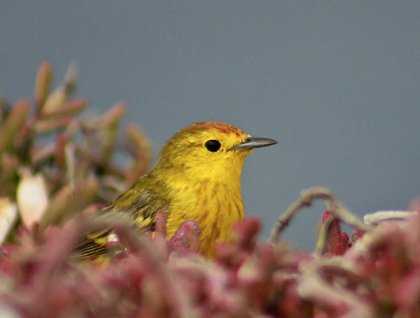We started our day with a dry landing on an uplifted island called South Plaza. The arid location makes for a perfect home for yellow land iguanas which covered the landscape. These cold blooded animals successfully colonized the island millions of years ago. There are three species of land iguanas within the islands; one species is located only on Santa Fe Island, the other one inhabits six different islands and the recently discovered pink land iguana only inhabits the volcanic rocks on Isabela Island. The yellow dragons are the major herbivores on the small uplifted islands. Every species found its niche and had to adapt to survive within its habitat.
We visited the two islands this afternoon where life inhabits a unique and astonishing landscape. South Plaza and Santa Fe Islands are very small geological formations. The terrain on South Plaza Island is covered with red succulents, prickly pears, and land iguanas pretty much everywhere, if you can spot them out of their camouflage. We were very lucky this morning to see a short-eared owl right next to our trail. These diurnal predators reside here because of the lack of presence of the Galapagos hawk. We returned back to the National Geographic Islander to learn about the human history of the Galapagos.
After lunch, we dropped anchor and got ready to explore Santa Fe Island. While some went snorkeling, others went kayaking. We spotted many species of fish and within the varieties, the yellow-tailed razor surgeons were the most common. We also spotted some diamond sting rays and a couple of green Pacific sea turtles. Later we had the option of hiking or taking a Zodiac cruise along the coast of Santa Fe Island. Cactus finches, mocking birds and many sea lions were part of the fauna we encountered.
It was a very full day filled with many interesting species.









